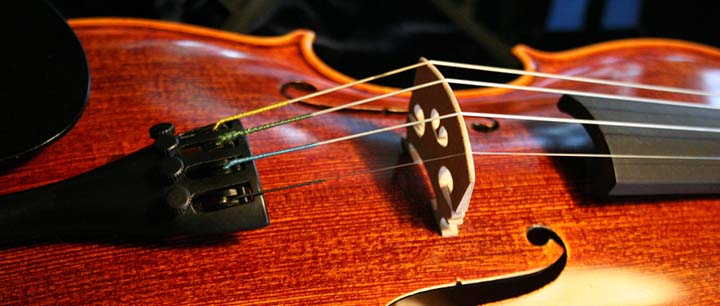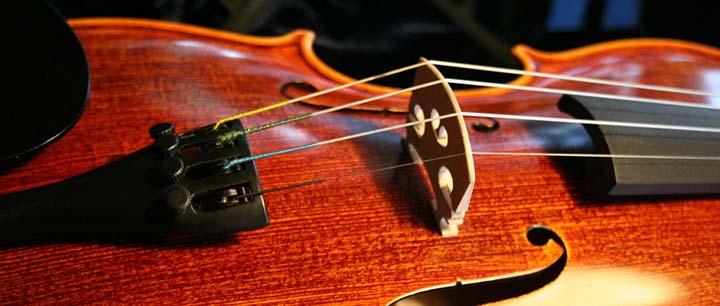 So you’ve decided to take violin lessons, and you couldn’t be any more excited! You have decided on the violin and bow that you want to purchase, and will be taking violin lessons with a private teacher; you’re well on your way. But aren’t there other things that you need too? Here are some violin accessories that will help both your playing and enjoyment of the violin:
So you’ve decided to take violin lessons, and you couldn’t be any more excited! You have decided on the violin and bow that you want to purchase, and will be taking violin lessons with a private teacher; you’re well on your way. But aren’t there other things that you need too? Here are some violin accessories that will help both your playing and enjoyment of the violin:
- Case: Every violin needs a durable case to prevent dents and dings no matter where you go. You can purchase softer cases for easier travel, or hard cases for extra protection. A good case will also keep your violin’s humidity level constant when you’re not playing. This is important because the wood in your violin may expand and contract with changes in humidity, causing it to go out of tune. Most cases have pockets for holding one or two bows, as well as smaller accessories. Straps are available for carrying your violin over your shoulder, or you can use the handle if you prefer to carry it like a briefcase. Average prices range between $50-$80.
- Shoulder rest: A shoulder rest props up your violin so that it rests at a comfortable location on your shoulder, and it keeps your instrument from slipping. Your shoulder rest needs to be adjustable for height, so that you can determine your most comfortable position, and also width so it accommodates your violin regardless of size. Average price for beginners is usually less than $25.
- Chin rest: A chin rest is a specially shaped piece of wood or plastic that attaches to the body of your violin to help position your jaw or chin comfortably on the instrument. Most violins will come set up with a chin rest, but you may find that you prefer a different one. The average price of these violin accessories is $15.
- Music stand: Instead of propping up your music on a chair or laying it flat on a table, the best place for your music is on a music stand. This way, your music is always conveniently available for you when you’re ready to play! Many stands are metal, although some are made of wood. Often, violinists have two: a smaller, collapsible one for taking to music lessons and recitals, and a sturdier one for home. Both types are adjustable for height and can swivel as needed. Collapsible stands typically are $20, while sturdier models can cost around $50.
- Tuner: How do you know if your violin is in tune? With a tuner, of course! One of the most indispensable violin accessories, most electronic tuners have lights that indicate green when each note, or string, is in tune, and likewise, turn red when it is not. More complex tuners may also have a metronome. Tuner prices can be very expensive to downright cheap, but a quality yet affordable tuner typically costs about $30. You can also find various tuner apps to download on your smartphone.]
- Sheet music or violin books: It’s one thing to play open strings, but it’s much more fun to play actual music! Therefore, purchasing sheet music or technique books will open up a whole new world to budding violinists. Your violin teacher can help you select several books that are at the appropriate level for you. Some books include a CD that plays the melody so that you can play along, or just the accompaniment so that you can play the melody yourself.
- Rosin: Often included with your violin, rosin is one of the most essential violin accessories. It helps create the friction needed for your bow to grip the strings and create sound. Keep in mind that not all rosin is created equal – the quality of the rosin, the amount that you apply to your bow, and how often you apply it will affect your playing. Budget about $12 for this purchase.
While a violin and bow are the basics needed to play the instrument, investing in these violin accessories will certainly help you as you progress. Combine them with a qualified and enthusiastic teacher, and playing the violin will quickly become one of your favorite hobbies.
Photo by firepile
Suzy S.

